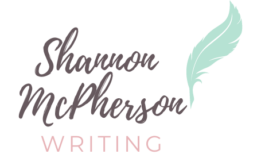Margaret Atwood says in her Master Class that “stories are patterns interrupted.” From your character’s regular pattern being interrupted, your story and plot are born. When you’re writing your story, something interesting, unusual, or out of the ordinary has to happen to your character to hook your reader and drive them into your story.
Without plot, your novel would be about your characters moving through their lives without a thread tying everything together. You would just be writing about someone’s daily routine at that point, which can be interesting in its own right. However, what would be even more captivating is reading about a character who does the same thing every single day, but one day, their alarm doesn’t go off. And then, you have a story. As you character navigates the rest of their day and the domino effect the lack of alarm had on it, that’s your plot.
When a book starts, it sometimes takes several pages or even a few chapters before that “triggering” event happens (check out my post on the Eight Point Story Arc for reference). As I mentioned in that post, the trigger, or inciting event, is what jumpstarts the plot and gets the conflict/action going. This trigger can be a lot of different things, but the most important thing is that it kicks off your plot. As you read books, keep an eye out for the trigger. Pay attention to where it’s placed in the story and how it happens. Write down interesting ones and keep them in your compost pile for inspiration. It’s interesting to see how writers utilize this plot point to get their story going.
One way to look at it is starting your novel on the day something interesting happens. Look at Harry Potter and the Sorcerer’s Stone. The first chapter opens with a very typical day in the Dursley household, but Uncle Vernon begins to notice odd things happening as the day goes on. Little does he know that when he wakes up the next day, there’ll be a baby on his front porch. All that happens in the course of just one chapter and that’s enough to get the reader’s journey started.
That’s just the beginning of your novel or story. What about the rest of it? In order to keep your plot going, you need to knit together events to propel your story along and keep your readers captivated. You can do this by creating various scenes, which can be broken up into chapters, and weave them together with narrative. As each scene or “mini-event” comes to a close, your readers need to be left with the feeling that they want to know what happens next or how the preceding scene resolves itself.
There are two different ways a story can be driven: by its characters or plot. With a character driven story, the actions and decisions the characters make fuel the story and move it from point A to point B. With a plot driven story, the events that occur happen outside of a character’s control (i.e. natural disaster, war, etc.). There are obviously a lot of details and parts that go into character vs. plot driven stories, so I will save those for a future blog post.
Events and characters are what make up your plot and story. Something that disrupts the normal routine of your character is what turns a normal day into something that’s worth telling your reader. It’s your job as a writer to figure out what that is and how you can cleverly weave together all the subsequent events in a cohesive manner.
Here is a fun assignment to help you think about how to drive plot:
Write on ten separate small pieces of paper an event that could spark a story. These could be as small or as big as you would like. Fold those up individually and keep them in one pile.
Then, do the same technique but with ten different characters. These characters could be of your own invention or well known-characters from other works of fiction or real life. Fold those up as well and put them in a pile.
After you do that, choose an event and a character. How do different characters interact with events they have not been faced with before? Play with this a bit and see what comes of it. Keep the selections random makes the exercise more fun and interesting.

